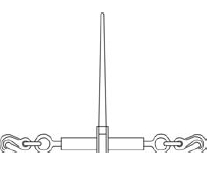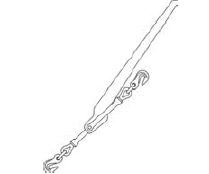

| Topic: Load Binder Safety | |
| Date Issued: September 19, 2014 | Date Revised: |
Load binders are valuable construction tools, however, there are safety hazards that may arise with their misuse. There are two types of load binders: ratchet type binders and lever type binders. There are fewer hazards associated with using ratchet-type binders when compared to lever-type binders.

Ratchet Type

Lever Type